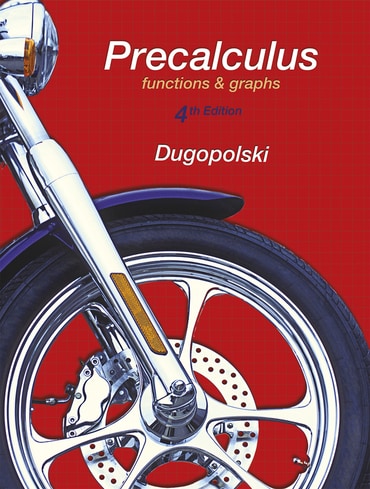Switch content of the page by the Role togglethe content would be changed according to the role
Precalculus: Functions and Graphs, 4th edition
Published by Pearson (December 27, 2011) © 2013
- Mark Dugopolski Southeastern Louisiana University
eTextbook
C$64.99
Need help? Get in touch

